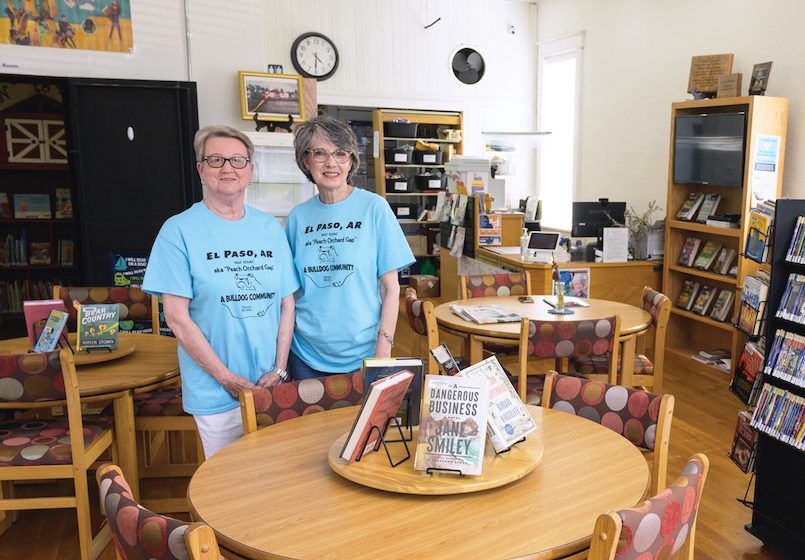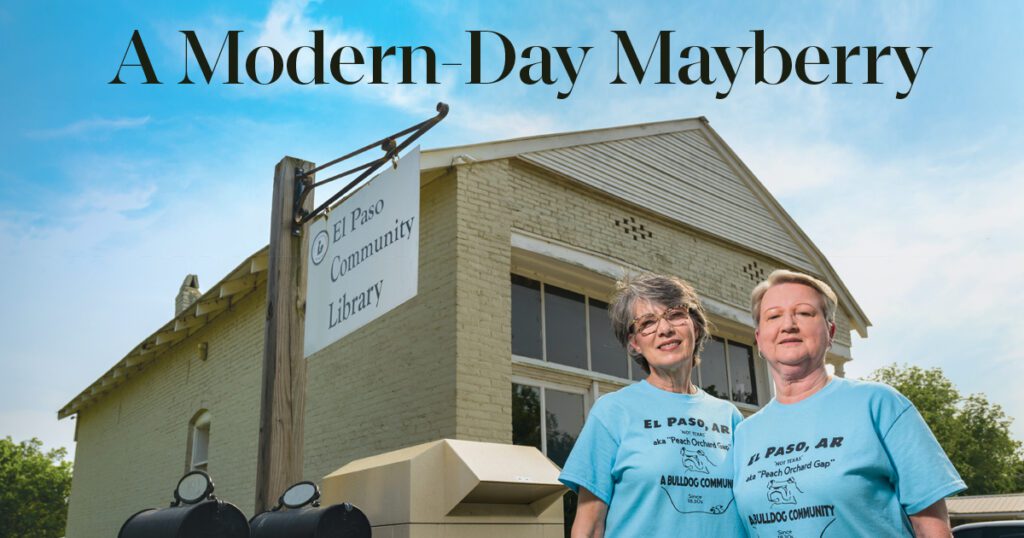01 Jul 2023 A modern-day Mayberry
By Judy Riley
In rural America, when a local community loses its school, it typically dies. And when a major highway bypasses the community, that assures its demise. But not so in El Paso, a small community of maybe a thousand folks.

It is nestled in the foothills of southwest White County on what was once known as the Southwest Trail, or Old Military Road. During the 1830s, the community was slated to become a second county seat. The Civil War and a devastating tornado ended that. And then, a major fire in the mid-1960s consumed most of El Paso, Ark, including six of the eight stores. In its heyday, it boasted a gin, a livery stable, a doctor, a lawyer, a bank and a boarding house. It was the business center of western White County. Today if you blink, you might miss it traveling through the junction of Highways 5 and 64.
The El Paso School consolidated with Beebe Schools in 1950 but kept its elementary until 1960. Highway 64 routed a mile south of the heart of the community. Despite all odds, El Paso thrived, and today boasts amenities often found in cities.
Why? Because of the people. “We wanted to be better; we wanted to do better for our children,” said Roy Dale Breckenridge, who has spent his entire 83 years (except for military service) in El Paso. In 1962, a group of 54 dedicated individuals, now all deceased except Breckenridge, formed the El Paso Parks and Playground Association to give leadership to volunteer efforts. Over time, that effort would result in a local fire department, a community center, a park with walking track, two ballfields and a community library. That does not seem out of the ordinary for most small towns. But El Paso is not a small town; it is a small community with no tax base. From the beginning, residents had to rely on their own ingenuity and labor. What is remarkable? Of those 54 individuals, 31 of them have direct descendants who are still involved.

Their first order of business was disposing of the old school building. The building was demolished, the bricks were sold and fundraising began in earnest. The lunchroom, a separate building from the school, became a gathering place. It was later sold and proceeds used to begin construction on the community center, which continues to be used today. Originally, the fire department took up half the building to house its only fire truck. Since then, the fire department–manned with all volunteers, of course–maintains 11 fire vehicles.
Meanwhile, residents wanted ball fields so their kids did not have to travel. With land donated from the Poole family and detailed plans drawn by local volunteers, serious construction began. Today, these two fields are used primarily for practice, but have all-new bleachers, another recent volunteer project. And then, in 2009, the community took on another big project, renovating an 1894 bank building to house a community library. Now part of the White County Regional Library System but maintained by this same volunteer board, it has become a gathering place and a huge resource for connectivity, according to librarian Janet Blansett.
What motivates residents to keep on with the volunteer effort and raising money for things important to them? “I love this community,” said Sherri Patrom, daughter of former board chair Dwight Patrom and great-granddaughter of two of the original board members. “I will always do my part to make sure it is carried on for future generations.” What makes it different? Phyllis Breckenridge said that it is the people, the volunteer spirit and the giving attitude.

“There is an enthusiasm in El Paso that is contagious,” board member and third-generation volunteer Arlena Riley said. “People want to be a part of something successful and worthwhile. We have three big events each year: a chili supper and dessert auction, a fish fry with donations accepted at the door and a potluck community supper a week before Thanksgiving. These activities become ‘homecoming’ events for those who still reside here and those who want to come home.”
One might expect locals to be clannish, after all many families have lived here for over a century. Oscar and Marisue Jones moved to the community in 1995. Marisue said she felt embraced; it was a total change of life for her. “We have lived in several places in Arkansas and Texas. This is a great place to live and a much easier life for us,” Oscar added.
“Folks in El Paso are passionate about honest living,” Blansett said, summing it up. “They are caring, generous and connected. Whether someone is ill, down on their luck, or just needs a porch rebuilt, there will be help on the way. El Paso residents live what they believe, a modern-day Mayberry.”








